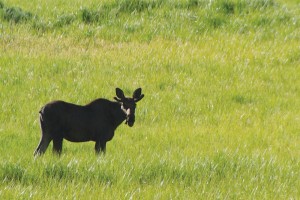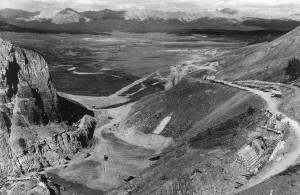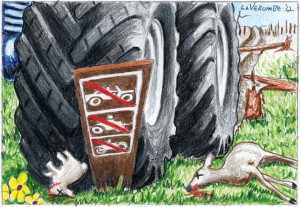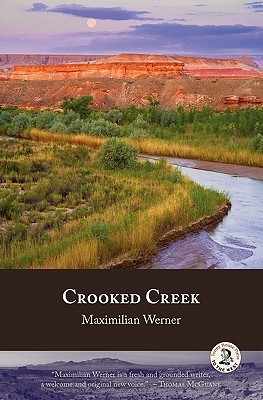By Christopher Kolomitz
Don Mann isn’t the type of guy that gets nervous very easily. The former Marine and accomplished hunter has bagged some of the more notable animals in North America – mountain goats, desert sheep, caribou, Dall’s sheep, Rocky Mountain bighorn, Canadian moose and more.
But, with the 2011 moose rifle season approaching and Mann spending countless hours in the field looking for moose, he was getting itchy. He’d seen plenty of moose sign – droppings, tracks and thrashed willows – but he hadn’t seen the animal.

Mann lives in Twin Lakes and had drawn an elusive moose tag for the fall hunt. He’d applied for a moose hunt 12 years in a row and had been awarded a tag in May of 2011 for a new moose hunting unit that covered five counties in Central Colorado.
Mann used his hunting connections to learn as much as possible about moose tendencies, calls and habitat. He called the guide who led him on a Canadian moose hunt and picked his brain. He talked with an outfitter buddy about possible hunt locations. A friend from Buena Vista offered to help scout and division of wildlife officers made suggestions.
So, with a game plan in hand, Mann starting scouting the area west and north of Fairplay. Since the new unit had had very little hunting pressure, Mann was confident he’d find his moose. But by September Mann had only spotted one young bull moose in the field near Georgia Pass and he was getting worried that he may not get a chance at a trophy moose.
However, those hunting connections paid off when a friend who had been bow hunting for elk called one evening to report that he’d seen a big moose in the Twelve Mile Creek area, a little south and west of Fairplay near the base of Weston Pass. Mann had been scouting the area before and went back a few days later.
At first, he thought he was looking at a weird shaped stump in an aspen grove. When the stump moved, Mann spotted a bull moose. Later that same day, Mann was making calls and spotted another bigger bull moose in a bunch of willows. He knew that he’d found his moose.
Mann returned to the area with three friends, set up camp and was out in the field on opening day of the moose rifle season. His calls weren’t working and he didn’t spot any moose. That night, around camp, his friends encouraged him to be patient.
Waking early the next day, Mann was out of camp before sunrise and had made his way to a ridgeline. Overlooking a willow bottom, he made three calls and noticed movement below. It was the big bull moose that he’d seen earlier. It was about 200-225 yards away and Mann used his Browning A-Bolt 7mm rifle to make the shot. Mann said he thinks he caught the animal in the early morning hours making its way into timber for the day.
Mann estimated the moose at right around 1,000 pounds and its antler width was 50 7/8 inches. He processed some of the meat himself, but sent much of it to a metro processing plant that specializes in wild game. In return he got steaks, teriyaki sticks, sausage, hamburger and more, some of which he shared with his friends who helped quarter and haul the meat out of the field. He explained the meat is less gamey that elk, and that he believes it’s the second best tasting next to sheep.
Mann is having the skull and antlers mounted by a Poncha Springs taxidermist and had the rack scored by a master measurer earlier this year. It scored 340 3/8 points on the Safari Club International standards. Next he’ll have it scored by the Boone and Crockett folks. A tooth from the animal is being used by state wildlife officials to determine the age.
Colorado Parks and Wildlife issued just 175 moose hunting licenses in 2011. In contrast hunters harvested about 43,400 Colorado elk in 2011, according to state wildlife biologists.






